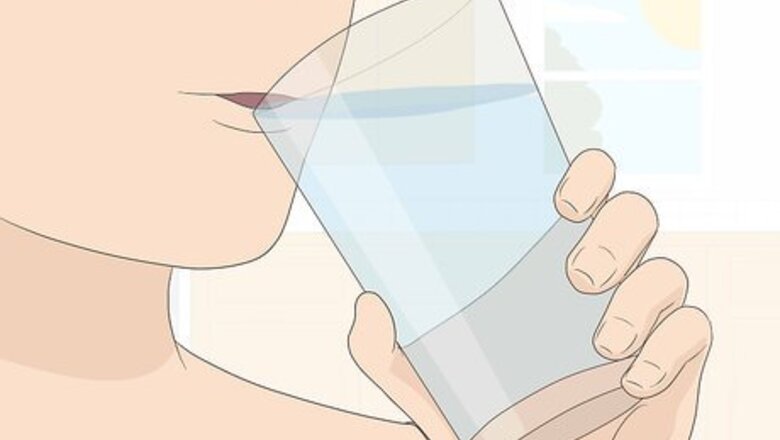
views
- Hydrate with water, hot tea, and other warm, decaffeinated liquids that thin out mucus. Try gargling with salt water and applying saline drops as well.
- Breathe in steam to break up mucus. Take a hot shower, do a facial steam, and use essential oils to clear your airways quickly.
- Apply a heating pad or another warm compress to your chest. Cough deeply to expel the mucus as you try each method and get lots of rest.
Drink lots of water.
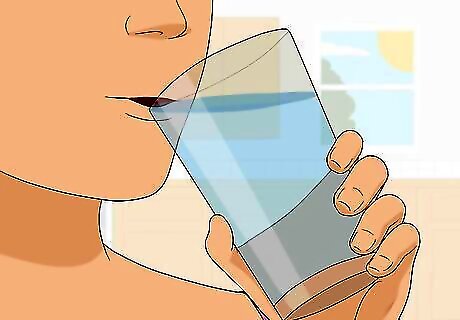
Liquids thin out mucus, making it easier to clear from your chest. Keep your body hydrated by drinking 6 to 8 cups (48 to 64 oz) of water throughout the day and with your meals. Dehydration can cause the mucus in your chest and throat to thicken, making it harder to get rid of. Being hydrated prevents the congestion from getting worse and clears out existing mucus. To avoid dehydration, pace your water intake. Drink at least 1 cup (8 oz) of water each hour to be hydrated throughout the day. Avoid alcohol and caffeinated drinks like coffee, which can dehydrate you.
Sip hot tea with honey.
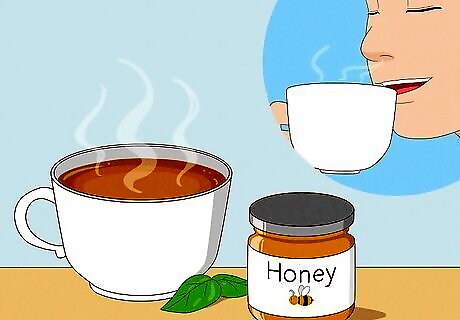
Inhaling the steam from hot drinks helps clear out mucus in your chest. Brew a cup of decaffeinated herbal tea 4 to 5 times throughout the day, adding in 1 tablespoon (15 mL) of honey to each cup, and inhale the steam from the cup as you drink. Hot liquid dissolves the mucus in your chest, and the steam also helps clear out your airways. Honey also breaks up excess mucus. Heat other liquids in place of hot tea if you prefer, like warm apple juice or even chicken noodle soup. Heat up a glass of water and mix in 1 tablespoon (15 mL) of lemon juice and honey instead. If you don’t like tea, try simply eating a spoonful of honey every few hours; it can soothe your mucus membranes better than some medicine! Remember not to give honey to any kids under 1 year old, as it can cause botulism.
Take a hot shower or do a facial steam.
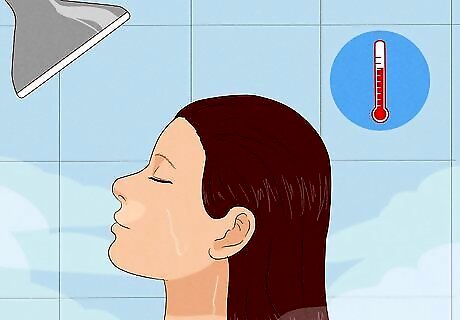
Steam thins out the mucus and opens stuffed breathing passages. Do a facial steam by filling a large bowl with hot water from the sink. Sit while leaning your face over the bowl, put a hand towel over your head to trap the steam around your head, and breathe in deeply for 15 to 20 minutes. Alternatively, take a hot shower with the curtain or door closed and inhale the steam. Inhale steam (either method works) 1 to 2 times daily until your symptoms improve.
Add essential oils to any steam treatment.
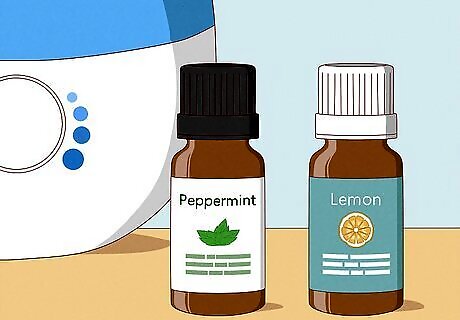
Inhaling essential oils helps clear out phlegm and relieve inflammation. Essential oils make other congestion treatments extra effective when added! Place a couple of drops in your shower, in the bowl for a facial steam, or in your humidifier's water. Essential oils like peppermint, menthol, lemon, and eucalyptus are natural decongestants. If you prefer, purchase an essential oil diffuser and put it in your bedroom (or whichever room you're in), so you inhale the oils all day.
Place a hot compress on your chest.
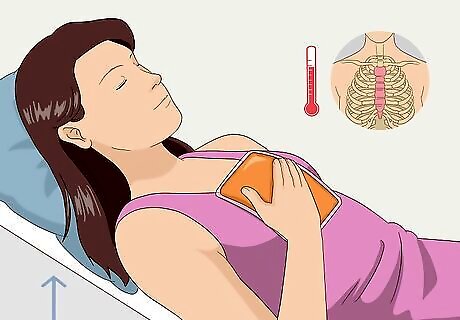
The heat will thin out mucus as you rest. Lie down with your head elevated, and place a heating pad (on its lowest setting) over your upper chest. Slip a piece of cloth beneath the pad to act as a barrier and prevent scalds. Let heat soak into your skin for 10 to 15 minutes at a time, and repeat this 2-3 times a day to get as much mucus as possible out of your lungs. There are many different hot compresses besides a heating pad, including a microwavable heat pack, a hot water bottle, or even a warm, damp hand towel. To make a steaming cloth, dampen a hand towel with water and set it in the microwave for 60–90 seconds. Be careful not to scald your chest; use a room-temperature piece of cloth as a barrier, just like the heating pad. Applying a hot pack or steaming hot cloth on your throat and chest will help soothe congestion and warm the airways externally!
Gargle with salt water.
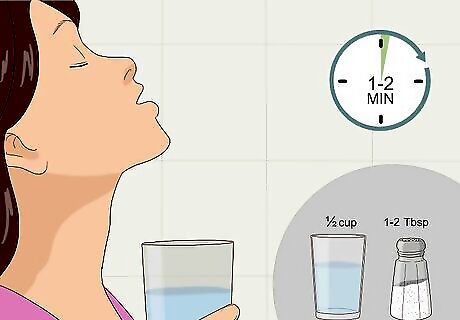
Salt water loosens mucus, making it easier to cough up. Mix a salt solution with ⁄2 cup (120 mL) of warm water and 1 to 2 tablespoons (12.5–25 g) of salt. Stir the salt in until it dissolves a bit, and then gargle a mouthful of it as far down your throat as possible. Keep gargling for 1 to 2 minutes so the salt water can take effect! Gargle with salt water 3 to 4 times a day until your congestion starts to break up.
Apply saline drops to your nose.
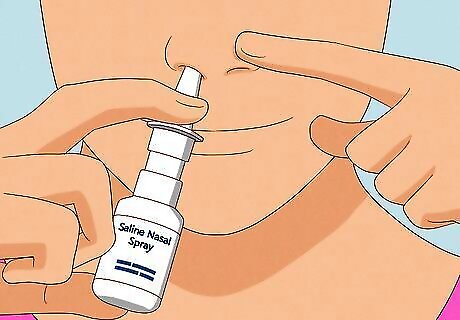
Saline drops remove excess mucus, so it’s easier to breathe. Either buy a saline nasal spray or make the saline nasal solution at home using 1 cup (8 oz) of warm water and ⁄4 teaspoon (1.2 mL) of salt. Spray the saline solution into your nostrils as directed, or use a dropper to apply your homemade solution to one nostril and then tilt your head, letting it flow out the other. Instead of a dropper, use a Neti pot to rinse out your nose with saline solution.
Use a humidifier.
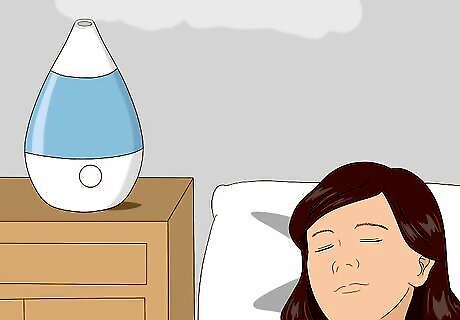
Humidifiers add moisture to the air to reduce congestion. Run a cool-mist humidifier in your room at night while you’re sleeping. Not only do humidifiers loosen congestion, but the humidity they produce can also open your nasal passages so breathing is easier. Place the humidifier so that it sprays moisture towards the top of your bed within 6–10 feet (1.8–3.0 m) of your head. If you use the humidifier nightly, aim to refill it every 3 to 4 days (or whenever it runs dry). Be sure to clean the humidifier regularly, too.
Do several deep, controlled coughs.
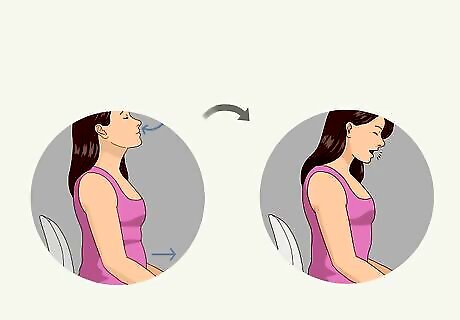
Deep coughs can remove the mucus once it’s loosened. Take a deep breath until your lungs are full of air, and hold it for 2 to 3 seconds. Tense and contract your stomach muscles to cough out forcefully. Remember: don’t just clear your throat or do repeated light coughs. Deep coughs are the most effective way to clear mucus, and they’re less tiring for you. Repeat the deep cough several times until you start to cough up mucus. If the deep coughing doesn’t get rid of all the phlegm, try a “huff” cough. Take a slightly deeper breath than normal and then exhale rapidly 3 times in a row, contracting your stomach muscles and making “ha” sounds each time.
Get as much rest as you can.

Rest helps your body conserve energy to fight off the sickness faster. Chest congestion is normally the result of illness, like a cold or flu. Don’t try to go about your day as normal or push through the discomfort! The best way to feel better (and get rid of congestion) is to rest and let your body heal. You don’t have to sleep the whole day; just stay home, lay on a comfy couch or bed, and relax. There are lots of ways to keep yourself entertained while resting! For example, read a book, put on your favorite movie, or binge-watch a new show.
Elevate your head when you sleep.
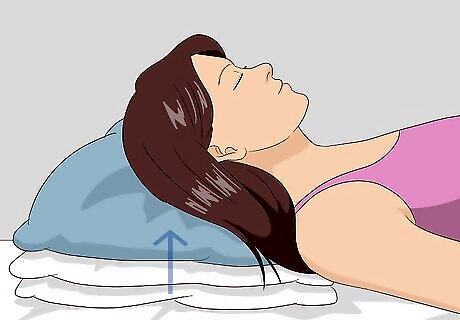
An elevated sleeping position drains mucus from your nose and chest. Prop up your head with at least 2 to 3 pillows while resting at night so that your head and neck are higher than your torso. As mucus drains from your nose, throat, and chest into your upper stomach, you’ll sleep better and wake up feeling less congested. Alternatively, lift up the head of your mattress and slip a 2 in × 4 in (5.1 cm × 10.2 cm) or 4 in × 4 in (10 cm × 10 cm) piece of wood beneath it to permanently raise the mattress. Getting into a leaning or reclining position during the day can also help. For example, if the congestion is in the lower part of your lungs, do the child’s pose in yoga and have someone clap your lower back.
Apply a vapor rub to your chest.
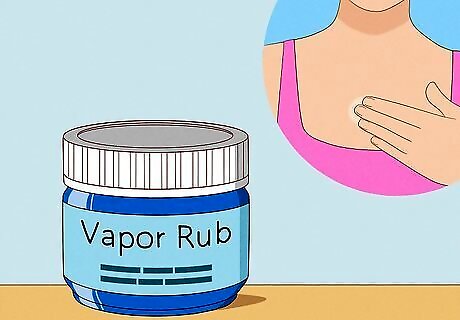
Breathing in the oils from vapor rubs can help clear out your lungs. Spread vapor rub across your chest every night before bed until your congestion goes away. Be sure to carefully read the directions for your vapor rub of choice before applying it! Vapor rub is made from essential oils (like menthol and camphor) and petroleum jelly; as the oils vaporize, they fight inflammation and congestion. Although vapor rub is meant to be breathed in, don’t place it directly under your nose. That can actually have the opposite effect and make breathing harder.
Take over-the-counter medication.
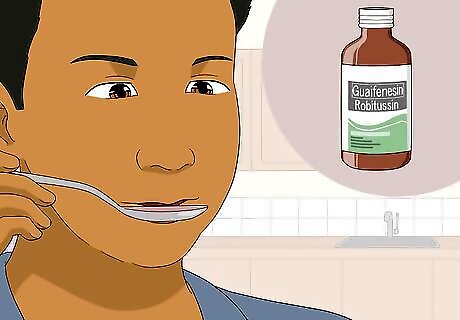
Expectorants and decongestants can both relieve your symptoms. Expectorants break up mucus, so it’s easier to cough it out of your body. Common brands include Robitussin and Mucinex, with active ingredients dextromethorphan and guaifenesin. Decongestants reduce inflammation to make breathing easier. Their active ingredient is pseudoephedrine, seen in common brands like Sudafed. Expectorants aren’t safe for children younger than 6 years old, so check with your doctor for a child-safe alternative. Don’t take a cough suppressant while you have congestion. Suppressants stop you from getting rid of mucus, causing congestion. Coughing is just your body’s way of solving the problem! Always read the instructions on a medicine bottle before taking it, and take no more than the recommended daily dosage.
Ask your doctor about prescription medications.

Prescription medicine may be needed if congestion lasts over 1 week. Make an appointment with your doctor if your symptoms don’t improve with any of the above methods. Clearly describe the severity and duration of your symptoms, and ask about a prescription medication that can clear up your congestion once and for all. The doctor can determine the best way to treat your symptoms! Ask about an antibiotic shot, nasal spray, pills, or prescription vitamin therapy to clear up stubborn or deep chest congestion. If they prescribe anything, follow their directions carefully each time you take it. Also, see the doctor if you’re developing more serious symptoms such as a fever, shortness of breath, a rash, or if you are wheezing.















Comments
0 comment